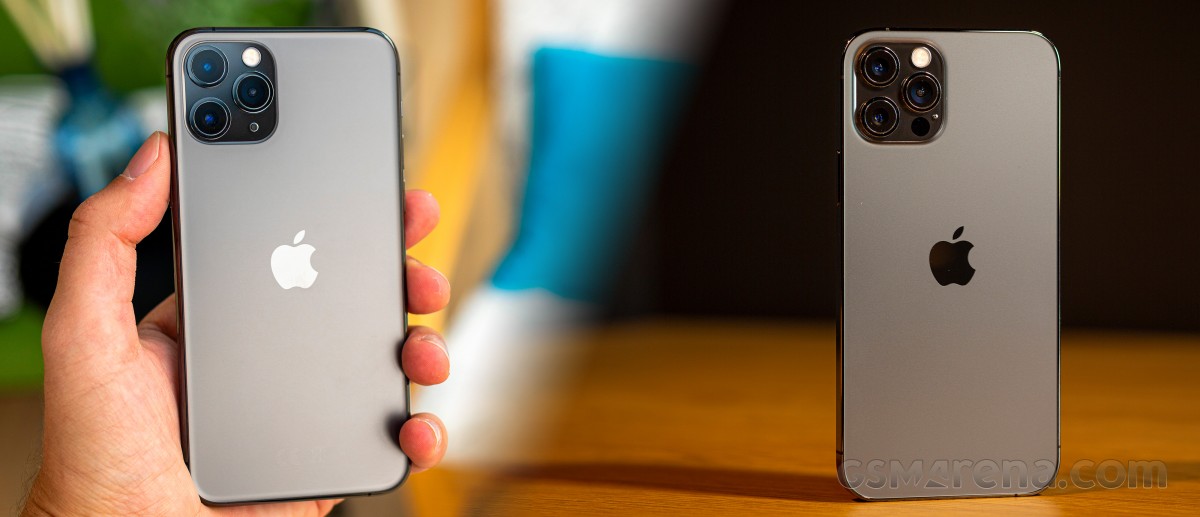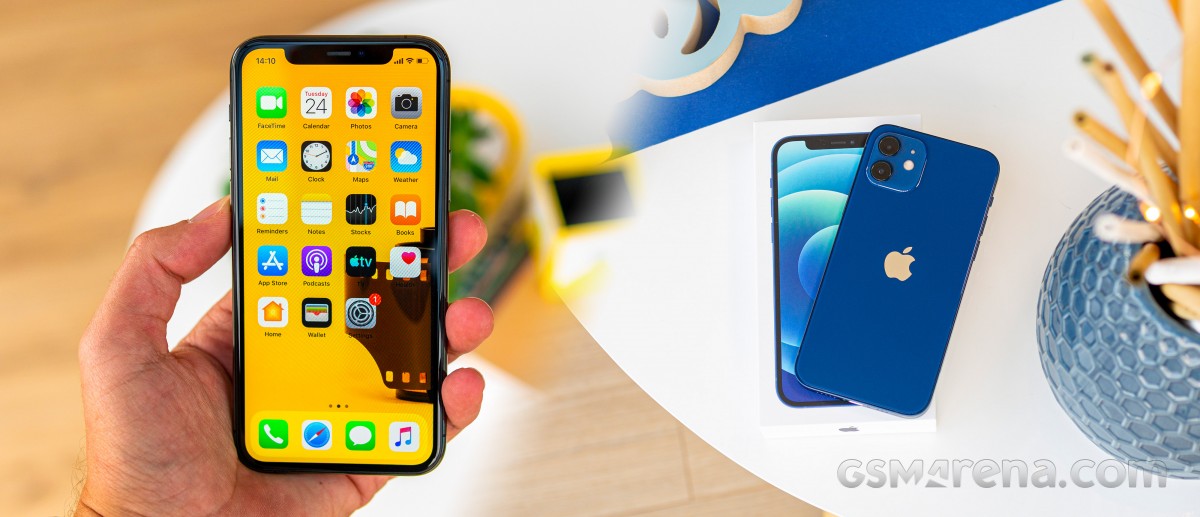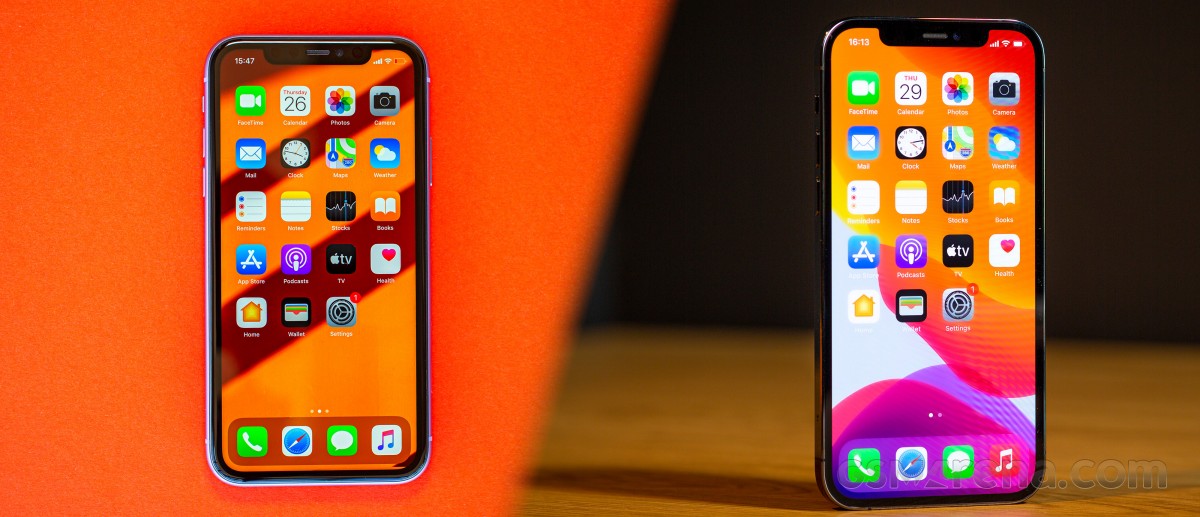iOS 16.1 brings battery percentage to all iPhones with Face ID
iOS 16.1 brings battery percentage to all iPhones with Face ID
Ever since the iPhone got Face ID, it was no longer possible to include battery percentage in the status bar since there was a notch taking up a lot of space now. Users had to pull down the iPhone’s control center to peek at how much percent battery was left.

With iOS 16, battery percentage was added as a feature and when enabled, it showed the percentage amount right on top of the battery icon in the status bar. It was added to all iPhones with Face ID excluding the iPhone XR, iPhone 11, iPhone 12 mini, and iPhone 13 mini.
In the first Beta build of iOS 16 for developers, multiple users reported in MacRumors forums that the battery percentage feature now lets all iPhones with FaceID notches display a number over the battery icon.
Reader comments
- BIG G
- X5u
- 30 Nov 2022
I swear very funny
- rusam2901
- 7km
- 25 Sep 2022
Last week faced exactly same issue on my 13 pro max with the iOS 16 update completed & in finishing stage to goto homescreen. Tried everythinjg, force reset option & connecting via iTunes but totally dead. Had to give it for service & the.
you can have 720p screen and still put there numbers. we dont live in 2012 anymore, most of phones, especially iPhone that we talk about have enough resolution AND dpi to have there percentage.
Which iPhone 12 to get – upgrader’s guide
Apple upgrade advice used to be relatively straightforward. Just get the new iPhone! Or skip a year and get the next one. But Apple has been expanding its phone lineup, and this year, there are more options than ever before. Too many options? Let’s break them down with Pros&Cons.
If it’s not immediately apparent, Android users need not read any further – this article is for iPhone owners looking to upgrade to one of the new iPhone 12’s.
There are four new models in Series 12, ranging from the 5.4" mini to the 6.7" Pro Max. They are spread over 54 different SKUs, which are the different combinations of models, storage capacities, and colors.
For context, back in 2018, the number of available SKUs was 36. While in 2017, there were just 20. And with more choice, it’s become more difficult than ever to pick the right iPhone to upgrade to. We’re here to help.
We went through Apple’s catalog of devices back to 2017, that’s when the iPhone 8 and X came out, and we considered the pros and cons of upgrading to each of the four iPhone 12 models. There’s no single right answer. It depends on your current iPhone experience and what you would want out of your next iPhone – a particular feature or a new size. We’ve tried to list your options, but the decision will ultimately be yours to make.
This page covers possible upgrade paths if you have a 2019 iPhone, the next page deals with iPhones from 2018 and 2017.
Before you dive in, check out the shared upgrades list below as all four iPhone 12 models enjoy a set of common advantages over their predecessors.
iPhone 12 series shared upgrades
- 5G connectivity (+mmWave in the US)
- All 12-series phones use OLED displays
- Ceramic Shield with better drop resistance
- Night mode for the selfie and ultra wide cameras
- Dolby Vision videos (4K/60 fps on Pros, 4K/30 fps on vanilla)
- LiDAR for the Pros
- Faster MagSafe wireless charging
- Improved water resistance
We won’t be repeating the upgrades above so keep them in mind as you check out your upgrade options. Also, don’t forget that all the new iPhone 12’s come without a charger or headphones in the box. That’s definitely a setback to consider for all upgrades this year.

iPhone 11 Pro Max to iPhone 12 Pro Max
Who is this for? Upgrading to the top iPhone model every year is not for everyone, but if you want the latest and greatest, this is it. The Pro Max got some exclusive upgrades for the main camera module, so if you shoot tons of photos and videos, the new Pro Max will deliver better quality. The chipset is incrementally faster, but more importantly, this year, the Pro duo gets 6 GB of RAM instead of 4 GB, a boon for multitasking. Also, 5G promises to be a major leap in wireless data speeds.
- The iPhone 12 lineup shared upgrades (top of page)
- 7% larger screen with Dolby Vision
- 18% faster CPU, more RAM (from 4 GB to 6 GB)
- 10% faster GPU
- Larger main sensor with brighter aperture, new OIS, LiDAR
- Longer telephoto lens (65mm vs. 52mm)
- 7% smaller battery (3,969mAh to 3,687mAh)

iPhone 11 to iPhone 12
Who is this for? Another major upgrade year over year – other than the telephoto camera and LiDAR, this phone is identical to the 12 Pro. This includes using the same OLED and with a higher resolution and HDR10. Basically, this is a Pro for $200 less, as long as you don’t use the tele camera often – if you don’t, get this one. If you do, skip to the next section.
- The iPhone 12 lineup shared upgrades (top of page)
- OLED display, Dolby Vision
- 40% higher pixel density due to higher resolution
- 23% faster CPU
- 10% faster GPU
- 9% smaller battery (3,110mAh down to 2,815mAh)
- Measurable 20-30% shorter runtimes in on-screen tasks

iPhone 11 Pro to iPhone 12 Pro
Who is this for? You are fine with your phone’s size but you want the new design, the new chipset, the larger screen, 5G even? Well, going directly from 11 Pro to 12 Pro might make all the sense then. Just remember, there is also the iPhone 12 which might be the better deal if the 2x optical zoom is not a make or break for you.
- The iPhone 12 lineup shared upgrades (top of page)
- 7% larger screen with Dolby Vision
- 18% faster CPU
- 12% faster GPU
- LiDAR Scanner
- Softer output from the telephoto camera
- 7% smaller battery (3,046mAh to 2,815mAh)
- Measurable 7% shorter runtimes in on-screen tasks

iPhone 11 Pro to iPhone 12
Who is this for? This year, the vanilla model is especially well rounded. Teardowns have revealed that it’s the exact same hardware as the iPhone 12 Pro with one key exception – the Pro has a telephoto camera (and LiDAR too, though that’s less impactful). So, scroll through your gallery and note how often zoomed-in photos appear. Count portrait shots, too, as the 52 mm lens is just right for that. The iPhone 12 has a slightly larger OLED with Dolby Vision and all of the lineup’s other bells and whistles, so would you really miss the telephoto cam?
- The iPhone 12 lineup shared upgrades (top of page)
- Noticeably lighter (164g vs. 188g)
- 7% larger screen with Dolby Vision
- 18% faster CPU
- 12% faster GPU
- Aluminum frame instead of stainless steel (subjective)
- You lose the telephoto camera
- Lower max brightness (800nits to https://jiji.ng/ 625nits)
- 7% smaller battery (3,046mAh to 2,815mAh)

iPhone 11 Pro to iPhone 12 mini
Who is this for? Were larger phones really any better, or was there simply a lack of a capable petite flagship? The new SE wasn’t it, but the iPhone 12 mini harkens back to the days when Steve Jobs praised phones that can be used single-handed. Moving from the iPhone 11 Pro to the iPhone 12 mini is not an upgrade per se, but it may allow you to rediscover your lost love of small phones.
- The iPhone 12 lineup shared upgrades (top of page)
- Much smaller and lighter phone (135g vs. 188g)
- 18% faster CPU
- 12% faster GPU
- You lose the telephoto camera
- 15% smaller screen, lower max brightness (800nits to 625nits)
- 27% smaller battery (3,046mAh to 2,227mAh)
- Aluminum frame instead of stainless steel (subjective)

iPhone 11 to iPhone 12 Pro Max
Who is this for? iPhones have been around for over a decade, but some people still haven’t owned one. If that was you last year, picking up an iPhone 11 as a relatively cheap and safe way to test out the platform – and if you found that you absolutely love it – then you may want to go all-in and get the most capable iPhone of this generation, the 12 Pro Max.
- The iPhone 12 lineup shared upgrades (top of page)
- Much larger screen, 22% more surface area, higher typical and peak brightness
- 23% faster CPU, more RAM (from 4 GB to 6 GB)
- 10% faster GPU
- Larger main sensor with brighter aperture, new OIS, LiDAR
- Telephoto camera
- Larger battery (3,110mAh to 3,687mAh)
- Stainless steel frame instead of aluminum (subjective)
- Bulkier, weighs more (194g to 228g)

iPhone SE (2020) to iPhone 12 mini
Who is this for? A straightforward case of buyer’s remorse – you got the new SE for its size, not its features, a compromise you were willing to make. Then the iPhone 12 mini happened – a small phone that requires no compromise. The chunky top and bottom bezels of the SE are even more of an eyesore than the notch, and with them gone, the mini manages to fit a larger display in a smaller body.
- The iPhone 12 lineup shared upgrades (top of page)
- Smaller, lighter phone (148g to 135g)
- 18% larger screen, 46% higher pixel density, higher peak brightness
- 25% faster CPU, more RAM (3 GB to 4 GB)
- 40% faster GPU
- Ultra wide-angle camera
- Better selfie camera (7 MP to 12 MP)
- Larger battery (1,821mAh to 2,227mAh)
- Face ID
- You lose the fingerprint reader
The cost calculations assume that you’ll sell your old phone and that you’re looking at a SIM-free device with base storage. Apple’s own trade-in program is a safe bet and the least amount of hassle. However, note that Apple offers the same amount of money for a 64 GB and a 256 GB phone.
So, if you do have a device with more than base storage, it’s probably worth the hassle to go through eBay or a similar market place. Even with a base model, you’re likely to get more money than Apple offers, so the upgrade can be even cheaper at the expense of some extra effort on your part.






